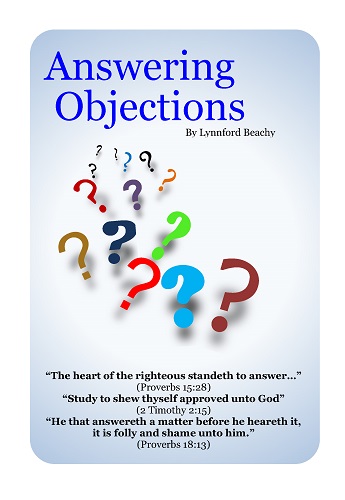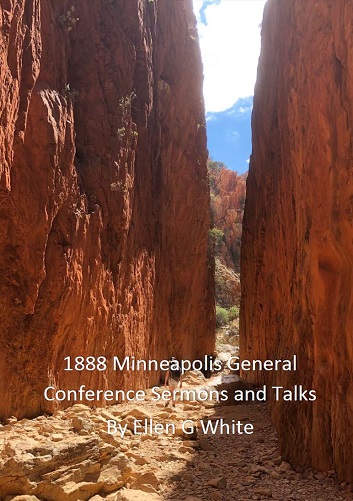Ellen White Comments on October 22, 1844
Today more and more people are rediscovering what the early Millerite and Adventist believers began to understand through Scripture study, that following Jesus’ literal movements in the literal heavenly sanctuary through its literal cycle of services and appointments is the key that unlocks past and future prophetic waymarks. There are others, even some Adventists, who have challenged the validity of this understanding especially as it relates to October 22, 1844 and the Day of Atonement. The question is raised, “did Jesus literally move into His Most Holy Place ministry on the literal Day of Atonement in 1844?”
We realize the Millerites had an incorrect understanding of the event associated with the end of the 2300 day prophecy. Voices that have discounted the specific date entirely are saying that because the event was wrong, so is the date. It is inferred that God was willing to allow this fault among the Millerites because truth is gradual, and since they did not even keep Sabbath at the time, how could they be accurate about the date of the Day of Atonement or the actual end of the 2300 day prophecy?
Would Jesus allow himself to enter into the Most Holy on a date chosen by man if the Kairite reckoning of when a month begins, and October 22 was not actually the Day of Atonement in 1844? Does the day and year even matter as long as we get the event right? These are valid and important questions. Our answer to these questions could be significant as it relates to the truth we hold dear of the literal Father and Son, our understanding of prophecy, its relation to the rules of interpretation.
In the study I prepared, The Seventh Month Movement and Validity of October 22, 1844, the above thoughts are included along with statements, and links to writings from actual witnesses who were part of the Seventh Month Movement that places no doubt in my mind of the validity of the Kairite reckoning as it relates to October 22, 1844, but a question has been put forward, “what sayeth Sister White”?
Searching her writings on CD Rom I could not find “October 22, 1844” mentioned specifically. Putting various combinations in the search engine I did discover she mentions the date specifically in another way. That statement is included along with others that help identify whether Sister White thought the year 1844 and the actual date of October 22 was valid, or if she simply believed the Day of Atonement itself was merely the event of importance, not the date.
“Of all the great religious movements since the days of the apostles, none have been more free from human imperfection and the wiles of Satan than was that of the autumn of 1844. Even now, after the lapse of nearly half a century, all who shared in that movement and who have stood firm upon the platform of truth, still feel the holy influence of that blessed work, and bear witness that it was of God.” {GC88 401.1}
”As the priest entered the most holy once a year to cleanse the earthly sanctuary, so Jesus entered the most holy of the heavenly, at the end of the 2300 days of Daniel 8, in 1844, to make a final atonement for all who could be benefited by His mediation, and thus to cleanse the sanctuary.” {EW 253.1}
“The tenth day of the seventh month, the great day of atonement, the time of the cleansing of the sanctuary, which in the year 1844 fell upon the 22d of October, was regarded as the time of the Lord's coming. This was in harmony with the proofs already presented that the 2300 days would terminate in the autumn, and the conclusion seemed irresistible.” {GC88 399.3}
“The preaching of a definite time for the Judgment, in the giving of the first message, was ordered of God. The computation of the prophetic periods on which that message was based, placing the close of the 2300 days in the autumn of 1844, stands without impeachment. The repeated efforts to find new dates for the beginning and close of the prophetic periods, and the unsound reasoning necessary to sustain these positions, not only lead minds away from the present truth, but throw contempt upon all efforts to explain the prophecies.” {GC88 456.2}
“The mistake had not been in the reckoning of the prophetic periods, but in the event to take place at the end of the 2300 days. Through this error the believers had suffered disappointment, yet all that was foretold by the prophecy, and all that they had any Scripture warrant to expect, had been accomplished. At the very time when they were lamenting the failure of their hopes, the event had taken place which was foretold by the message, and which must be fulfilled before the Lord could appear to give reward to his servants.” {GC88 423.2}
“Many rashly cut the knot of difficulty by denying that the 2300 days ended in 1844. No reason could be given for this, except that Christ had not come at the time they expected him. They argued that if the prophetic days had ended in 1844, Christ would then have returned to cleanse the sanctuary by the purification of the earth by fire; and that since he had not come, the days could not have ended… {GC88 409.2}
…To deny that the days ended at that time was to involve the whole question in confusion, and to renounce positions which had been established by unmistakable fulfillments of prophecy.” {GC88 409.3}
“Though many abandoned their former reckoning of the prophetic periods, and denied the correctness of the movement based thereon, others were unwilling to renounce points of faith and experience that were sustained by the Scriptures and by the witness of the Spirit of God. They believed that they had adopted sound principles of interpretation in their study of the prophecies, and that it was their duty to hold fast the truths already gained, and to continue the same course of Biblical research. With earnest prayer they reviewed their position, and studied the Scriptures to discover their mistake. As they could see no error in their reckoning of the prophetic periods, they were led to examine more closely the subject of the sanctuary.” {GC88 410.1}




